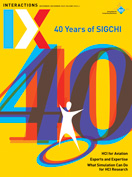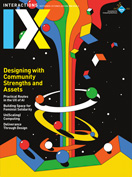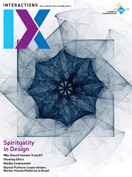Authors:
Elizabeth Chin
There is an old, old joke in Haiti that 80 percent of the population is Catholic, and 100 percent are Vodouyizan, or practitioners of Vodou. Part of the reality the joke exposes is that for Catholicism, practicing Vodou is anathema; for Vodouyizan, there is no conflict in being both Catholic and Vodou. On the surface, scientific inquiry in design and technology might seem antithetical to Vodou. Yet those who study and experience Vodou have documented widely that Vodouyizan are enthusiastic about technology, whether mailing cassettes of songs and instructions, making and distributing VHS tapes, or participating in WhatsApp calls [1]. This is also common among practitioners of other spiritual traditions such as Santería and Candomblé [2,3]. In the midst of a 21-day ceremony I attended in Haiti in 2018, the Vodou priest, mounted by Ogou, turned to me and told me to start video recording what was happening.
Part of my research and creative practice via my ongoing project the Laboratory of Speculative Ethnology involves creating speculative devices that reimagine current technologies using a framework of Afro-diasporic spiritualities with Afrofuturism. My work asks, "How might we craft technology that refuses to surveil and contain Black bodies, and is instead devoted to preserving Black life? What would such technologies do? What would they look like? How would they work?"
The Hands Up, Don't Shoot Glove is one way I have explored this question. It also illustrates aspects of the ways in which spiritual practice, aesthetics, and power are part and parcel of technology and HCI. The glove's palm incorporates a small camera that is connected to a Raspberry Pi, along with an accelerometer. When the wearer makes the "hands up" gesture, the device begins taking photographs and sends them to the Web.
In choosing to cover the glove in the elaborate beadwork typical of Vodou and Santeria ritual objects, my aim is to show that there is no inherent disjuncture between the Raspberry Pi and Afro-diasporic spirituality—they work together in the complex and urgent project of protecting Black life under current conditions. The 16 cowries on the glove reference the divination system used by many Santeria practitioners, framing any encounter where the glove might be needed as unpredictable. The main image on the glove's back is the double-headed ax wielded by the Santeria deity Chango. Associated with the colors red and white, Chango is a king and the dispenser of justice. He is also associated with lightning, and by implication, electricity and related technologies. The glove's background is beaded in a Haitian style, using silver and red. Here, the red represents Ogou, who is found throughout the Caribbean and is especially important in Haiti. He is a blacksmith and warrior whose realm is iron—railroads, cars, telephone wires, weapons. Chango and Ogou operate via the glove as warriors for justice, fierce protectors who persevere against impossible odds.
 |
Vodou priest using a smartphone to document a room prepared for ritual. |
 |
The Hands Up, Don't Shoot Glove. |
 |
Speculative glove. |
AI and tech more broadly have been shown to amplify problematic racial biases [4,5]. Leaning into the spiritual and aesthetic principles that have roots in Africa, among Indigenous peoples, and in Asia is a way to question the claims embedded in the universalist values that emerged in the areas of design and technology in the wake of World War II. There is little question that such universalism has not reached its lofty aims, in part because it is Eurocentric [6]. Futures in which technology acts in the interests of Blackness will include technologies that not only work differently; they will also look different and feel different. They will draw from Africa and its diaspora for both form and function, and their outcomes have yet to be imagined.
1. Boutros, A. Gods on the move: The mediatisation of Vodou. Culture and Religion 12, 2 (2011), 185–201; https://doi.org/10.1080/14755610.2011.579718
2. Beliso-De Jesús, A. Electric Santería: Racial and Sexual Assemblages of Transnational Religion. Columbia Univ. Press, New York, 2015.
3. Richman, K.E Migration and Vodou. Reprint edition. Univ. Press of Florida, Gainesville, FL, 2018.
4. Benjamin, R. Race After Technology: Abolitionist Tools for the New Jim Code. 1st edition. Polity, Medford, MA, 2019.
5. Noble, S.U. Algorithms of Oppression: How Search Engines Reinforce Racism. Illustrated edition. NYU Press, New York, 2018.
6. Chin, E. Bauhaus and the people without design history. In Bauhaus Futures. L. Forlano, M.W. Steenson, and M. Ananny, eds. MIT Press, Cambridge, MA, 2019, 85–94.
Elizabeth Chin is an anthropologist and ethnographer with a varied practice that has included performative scholarship, experimental writing, vernacular technology, and community-engaged work. A professor in the Media Design Practices MFA program at ArtCenter College of Design in Pasadena, she is currently editor-in-chief of American Anthropologist. [email protected]
Copyright held by author
The Digital Library is published by the Association for Computing Machinery. Copyright © 2022 ACM, Inc.






Post Comment
No Comments Found